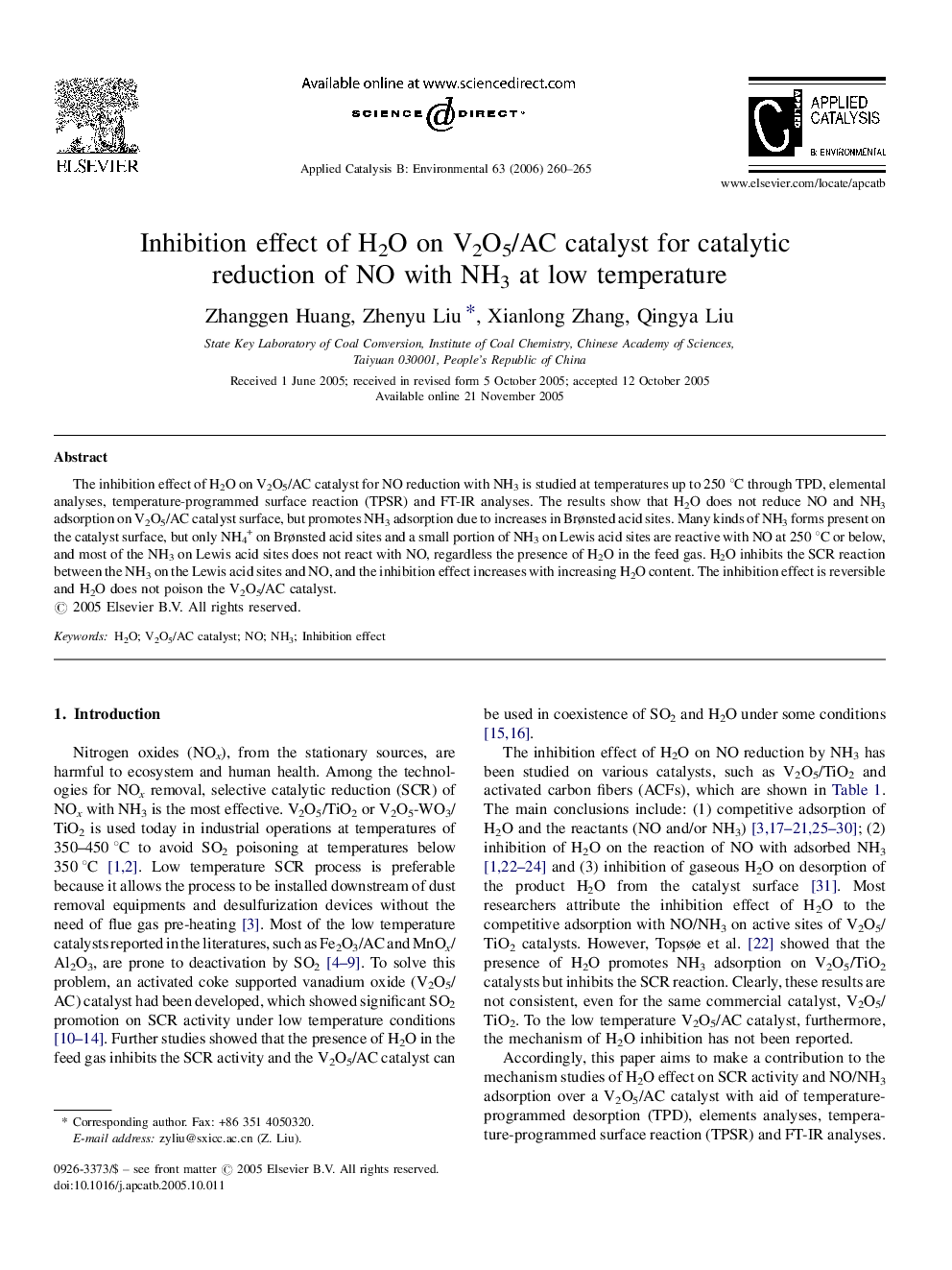| Article ID | Journal | Published Year | Pages | File Type |
|---|---|---|---|---|
| 48886 | Applied Catalysis B: Environmental | 2006 | 6 Pages |
The inhibition effect of H2O on V2O5/AC catalyst for NO reduction with NH3 is studied at temperatures up to 250 °C through TPD, elemental analyses, temperature-programmed surface reaction (TPSR) and FT-IR analyses. The results show that H2O does not reduce NO and NH3 adsorption on V2O5/AC catalyst surface, but promotes NH3 adsorption due to increases in Brønsted acid sites. Many kinds of NH3 forms present on the catalyst surface, but only NH4+ on Brønsted acid sites and a small portion of NH3 on Lewis acid sites are reactive with NO at 250 °C or below, and most of the NH3 on Lewis acid sites does not react with NO, regardless the presence of H2O in the feed gas. H2O inhibits the SCR reaction between the NH3 on the Lewis acid sites and NO, and the inhibition effect increases with increasing H2O content. The inhibition effect is reversible and H2O does not poison the V2O5/AC catalyst.
